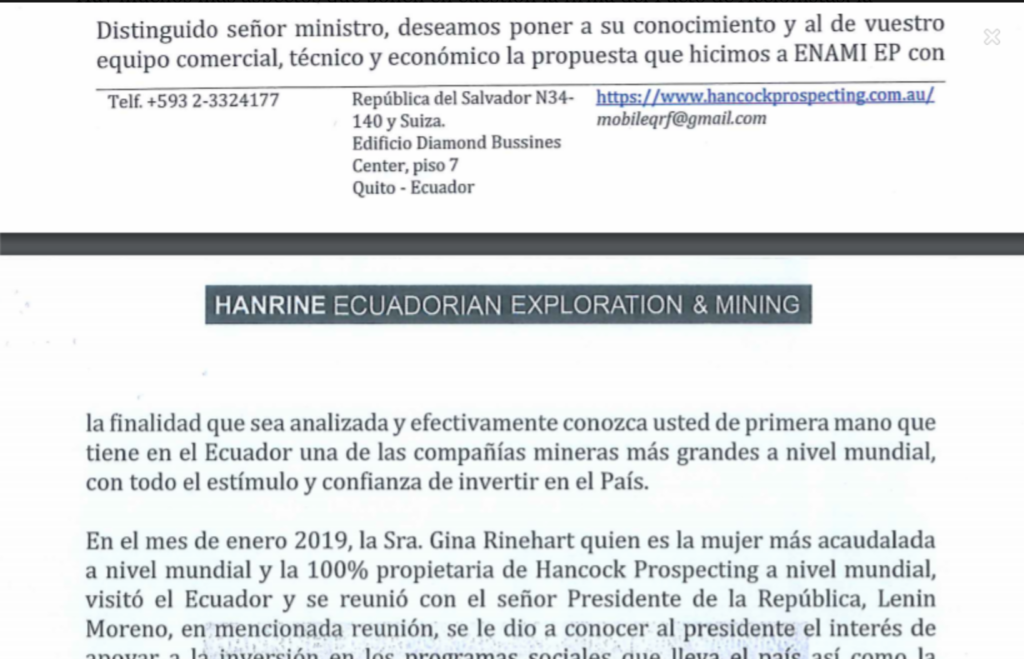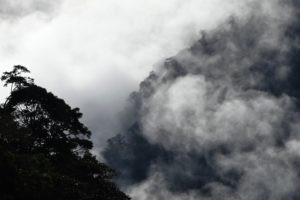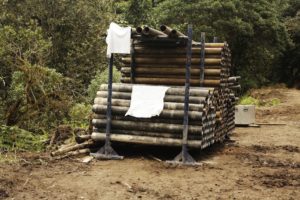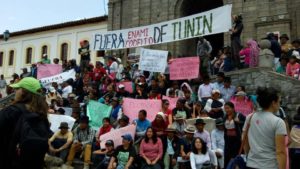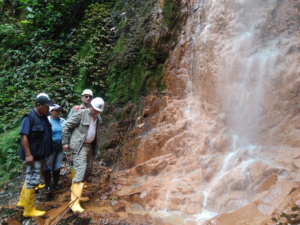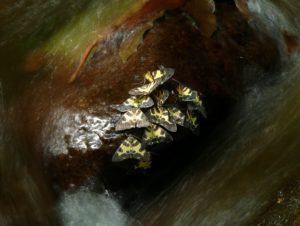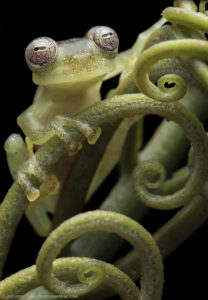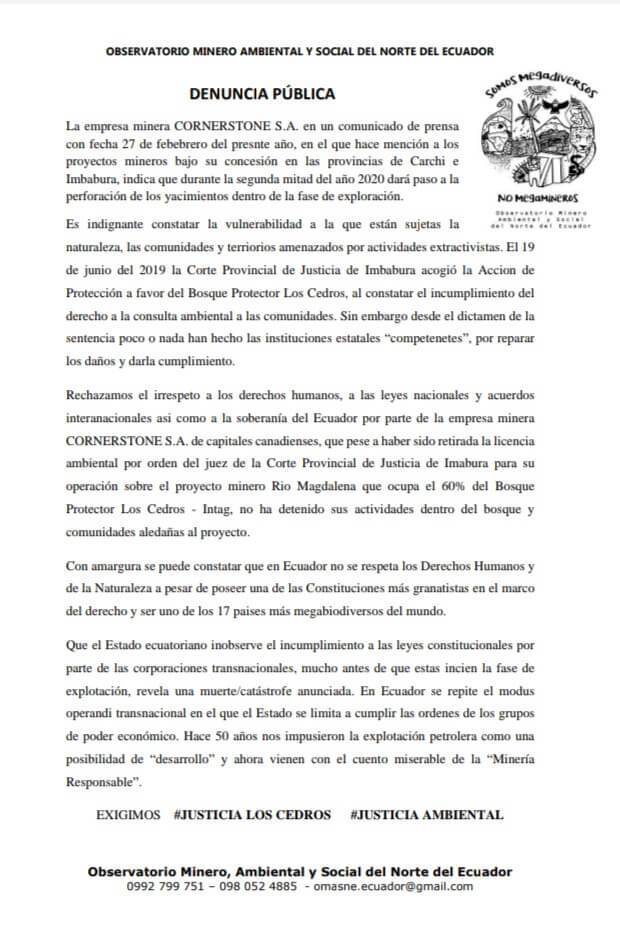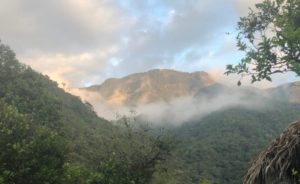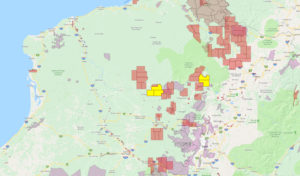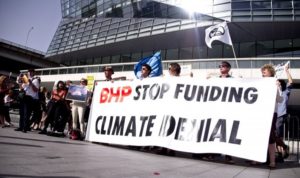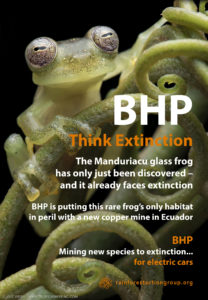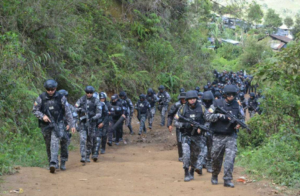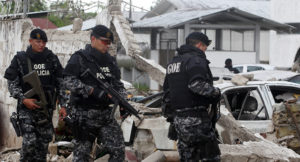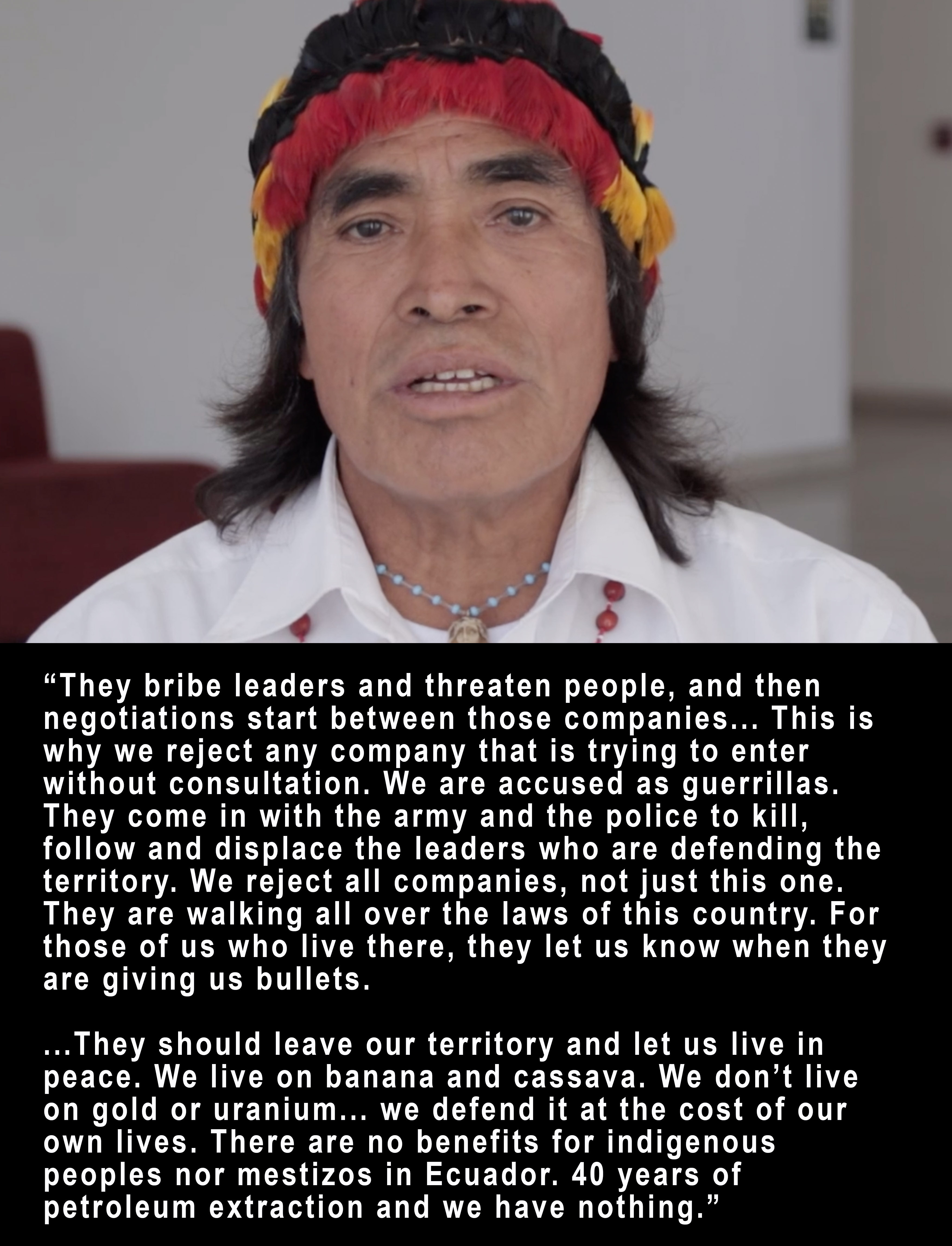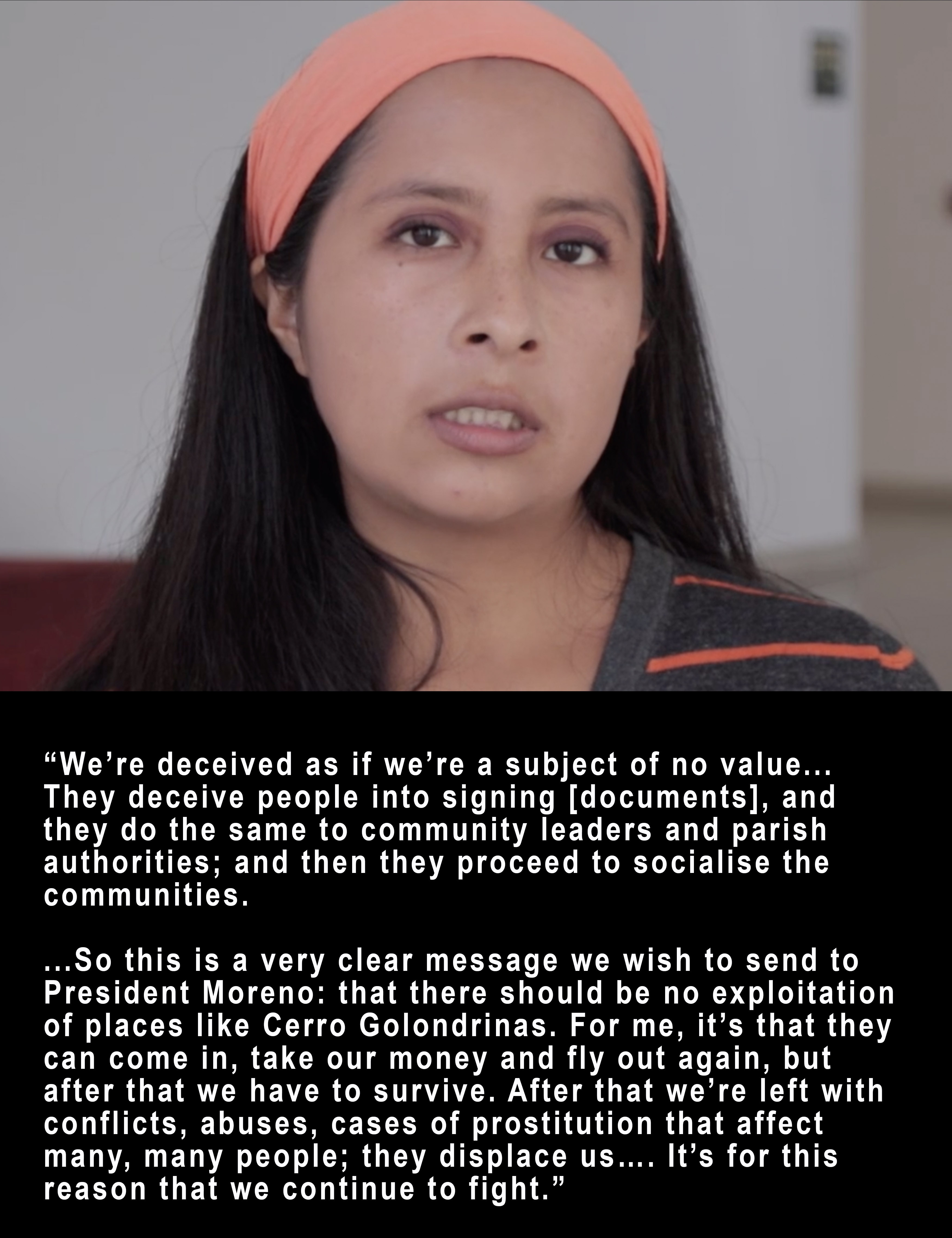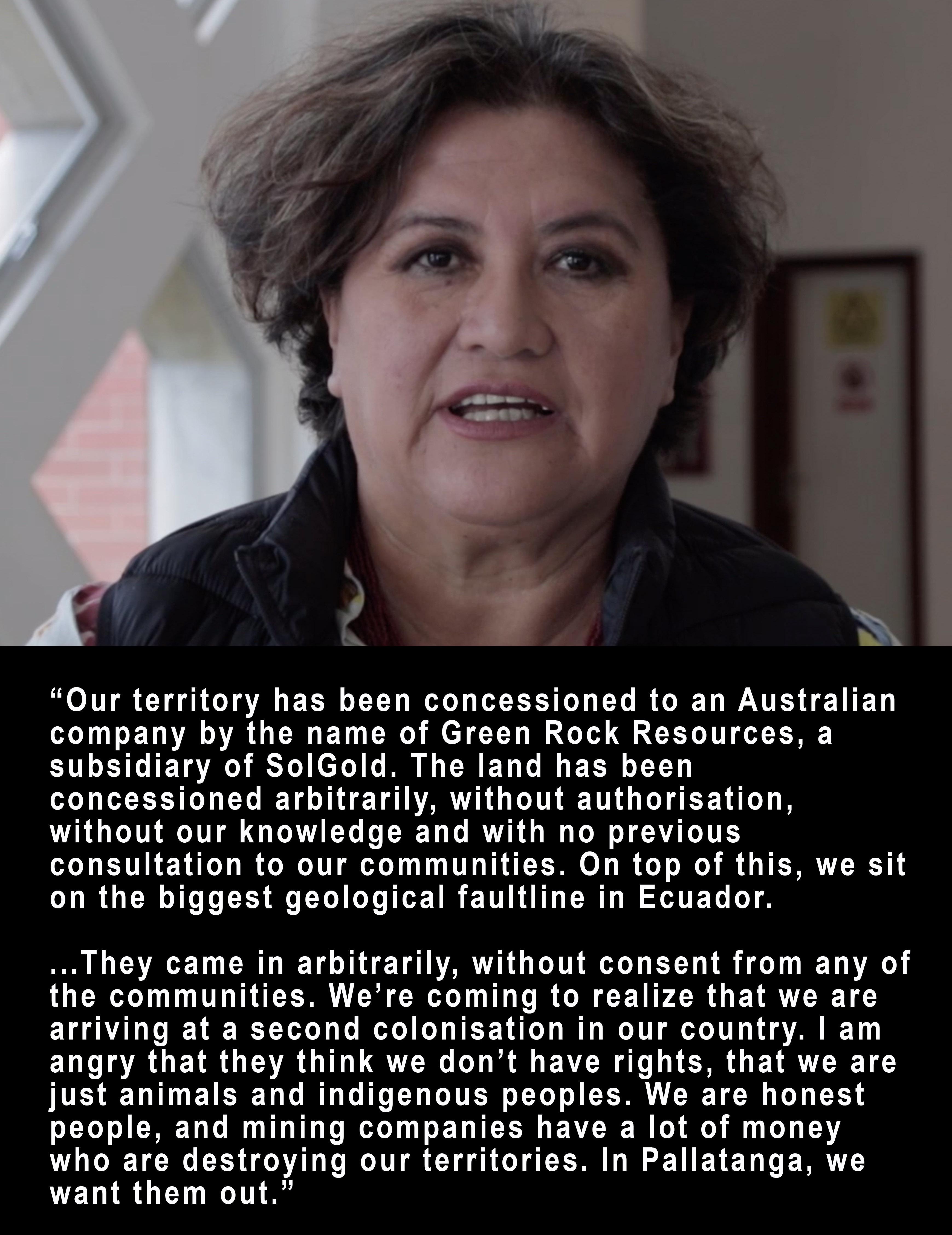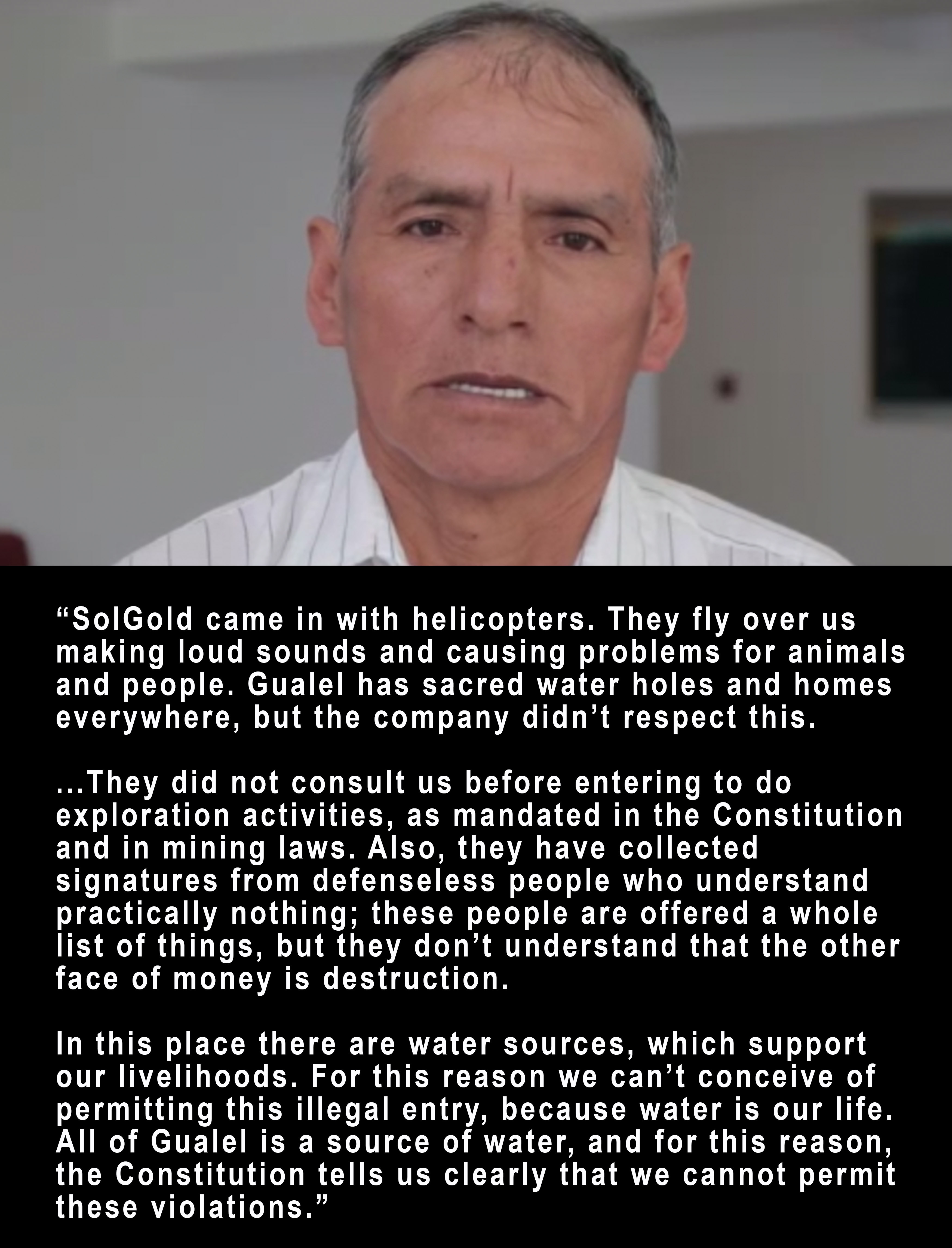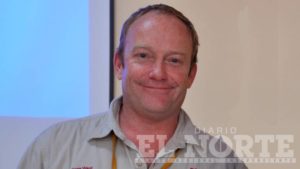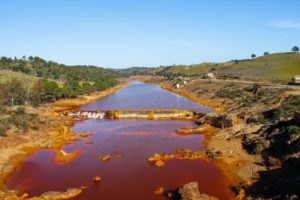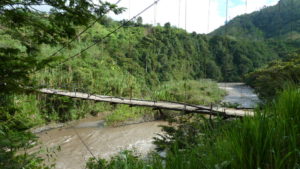Canadian mining company Solaris Resources has been criticised by multiple organisations for its irresponsible conduct in sending seven members of the Shuar communities of Warints and Yawi to the Prospectors and Developers Association of Canada (PDAC) where they were exposed to COVID-19. Subsequently several members of their families have died, with many more sick.
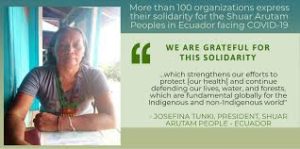
Indigenous tribes are particularly at risk of pandemics. There have been waves of epidemics since the area was first colonised, killing up to 90% of the tribespeople. More recently, polio killed around two-thirds of the Waorani in the 1950s, and the Shuar did not fare much better. When mining operations are allowed to continue in areas where there are limited health resources, workers and local populations are put at grave risk.
What compounds the issues in this case is that the members taken were not officially elected representatives of the Shuar Arutam, which indicates the mining company was bypassing official Shuar authority over their land, a move that could have fractured the community, even without the threat of the virus.
Several attendees contracted coronavirus while attending the conference. PDAC put out a media statement here.
Official statement of solidarity below in English and Spanish.
Solidarity with the Pueblo Shuar Arutam Facing COVID-19 emergency | SOLIDARIDAD CON EL PUEBLO SHUAR DEL ECUADOR, EN EL MARCO DE LA CRISIS DE COVID-19
[español abajo]
We, the undersigned organizations express our solidarity and support to the authorities of the Shuar Arutam People (PSHA), to the Shuar People in general, and to all peoples and nations of the Ecuadorian Amazon, currently facing a possible outbreak of COVID-19, in their communities.
Background
On April 13, the Shuar Arutam People (PSHA) together with dozens of Ecuadorian allied organizations sent an alert to the President of the Republic of Ecuador, the Ministry of Health, and the IACHR demanding that urgent measures be taken regarding a possible outbreak of COVID-19 provoked by the irresponsible actions of a Canadian mining company, Solaris Resources (whose main shareholder is the Canadian mining company Equinox Gold).
In March, the PSHA leadership condemned the participation of seven members of the Shuar communities of Warints and Yawi, invited by Solaris Resources, to the annual conference of the Prospectors and Developers Association of Canada (PDAC). Specifically, they condemned their participation because the seven indigenous people who participated in that conference were not duly elected representatives of the Shuar Arutam People's Assembly. The PSHA also noted that they were ignoring the assembly's decision to categorically reject mining in their territory. It is worth noting that in days before the conference in Canada several warnings were issued about the risks it posed to participants as a possible outbreak point for the COVID-19 virus. As expected, it was released after the event that the virus had been contracted by several participants, including the Burkina Faso deputy minister of mines. This then heightened concerns about a possible infection in the territory of the PSHA.
On April 2, the president of the PSHA received the news that the mother of one of the attendees died with symptoms similar to that of the coronavirus and asked the authorities to investigate the case, given its direct link with the conference, a known transmission point. After ridiculing the statement of the Shuar leader, the Governor of the province of Morona Santiago affirmed, without any evidence, that the death was not related to the PDAC conference or COVID-19, and rather congratulated the mining company Solaris Resources. Then, one more person died, this time the father of another of the attendees, and 8 other members of the Warints and Yawi community have presented symptoms similar to those of COVID-19.
As organizations and individuals of the international community,
We express our profound concern about the lack of attention and response by the Ecuadorian authorities to this serious health emergency. Furthermore, we are concerned that the Ecuadorian government has allowed mining and oil companies to be exempt from quarantine controls imposed nationally, which puts workers and populations living in the vicinity of their operations at greater risk. These peoples already face limited access to health to deal with the pandemic.
We condemn Canadian mining company, Solaris Resources’ permanent interference in Shuar indigenous territory as well as its disdain for the decisions of the self-determination of the PSHA, the same government who, March 30, 2019, in a general assembly, declared its territory free of mining and demanded the immediate exit of extractive companies from the territory. The actions of this company and its subsidiary in Ecuador (Lowell Minerals) constitute serious threats to peace and health in the Amazon region as a whole. If the cases of COVID-19 are confirmed in the Shuar communities of Warints and Yawi, this is because the company exposed them to the risk of contracting the virus.
We condemn the ongoing destruction and risks to the public health of these communities caused by foreign mining companies Aurania Resources (Canada), CRCC-Tongguan (China), SolGold (Australia), Luminex Resources (Canada) - BHP (Australia), Lundin Gold ( Canada) / Newcrest (Australia), Fortescue Metals Group (Australia) and Solaris Resources (Canada) in the Ecuadorian Amazon. Their activities are causing irreparable damage and putting the indigenous social fabric and the Amazonian ecosystems in all their mega-diversity, at grave risk. Their mere presence in the region, due to the possibility of coronavirus transmission, may exacerbate these impacts. Similarly, we condemn any attempt by these companies to wash their image by taking advantage of the crisis to position themselves by offering social and sanitary works.
We condemn the permanent militarization of the indigenous territories of the Ecuadorian Amazon. The presence of military personnel not only represents an immediate threat due to the possible spread of COVID-19, but represents yet another attempt to impose a development model that is both destructive and violent.
We stand in solidarity with the government of the Shuar Arutam People and with the other Indigenous and traditional peoples living in the Ecuadorian Amazon. Their self-subsistence food and economic activities are already negatively affected by mining and oil extractive activities, making them even more vulnerable to a possible outbreak of COVID-19.
We support the call of the PSHA to demand that immediate attention be paid by the relevant government authorities and we demand the immediate exit of the extractive companies from the territory of the Shuar Arutam People and from the other Amazonian indigenous territories so that the epidemic of COVID-19 does not continue to spread, thereby increasing the likelihood of these vulnerable populations, to become infected.
[This statement has the official approval of the Shuar Arutam Peoples government (PSHA)]
SOLIDARIDAD CON EL PUEBLO SHUAR DEL ECUADOR, EN EL MARCO DE LA CRISIS DE COVID-19
Las organizaciones abajo firmantes expresamos nuestra solidaridad y apoyo a las autoridades del Pueblo Shuar Arutam (PSHA), al Pueblo Shuar en general y a todos pueblos y nacionalidades de la Amazonia ecuatoriana, los mismos que actualmente enfrentan un posible brote de COVID-19, en sus comunidades.
Antecedentes
El 13 de abril, el Pueblo Shuar Arutam (PSHA) junto a docenas de organizaciones aliadas ecuatorianas enviaron una alerta al Presidente de la República del Ecuador, Ministerio de Salud y a la CIDH, exigiendo que se tomen medidas urgentes con respecto a un posible brote de COVID-19, provocado por la irresponsabilidad de una compañía minera canadiense, Solaris Resources (cuyo accionista principal es la empresa minera canadiense Equinox Gold).
En marzo, la dirigencia del PSHA condenó la participación de siete miembros de las comunidades Shuar de Warints y Yawi, invitados por la empresa mencionada, a la conferencia anual de la Asociación de Prospectores y Desarrolladores de Minas de Canadá (PDAC). Concretamente, la censura se dio por cuanto los siete indígenas participaron en esa conferencia por no ser representantes debidamente elegidos por la asamblea del Pueblo Shuar Arutam y por desacatar la decisión de la asamblea de rechazar categóricamente la minería en su territorio. Vale destacar que en días anteriores a la conferencia, en Canadá se generaron varias advertencias sobre el peligro de llevarlo a cabo por el riesgo de ser un punto de contagio para el virus COVID-19. Tal como se había previsto, se dio a conocer después del evento que hubo contagio del virus de varios participantes, incluyendo el viceministro de minas de Burkina Faso, y ahora ha generado preocupación ante una posible infección en el territorio del PSHA.
El 2 de abril, la presidenta del PSHA recibió la noticia de que la madre de uno de los asistentes murió con síntomas parecidos a lo del coronavirus y pidió a las autoridades investigar el caso, dados los contactos con la conferencia, un punto de transmisión conocido. Luego de ridiculizar la declaración de la dirigenta Shuar, el Gobernador de la provincia de Morona Santiago afirmó, sin evidencia alguna, que la muerte no estaba relacionada con la conferencia PDAC o COVID-19, y más bien felicitó a la compañía minera Solaris Resources. Luego, otra persona más murió, esta vez el padre de otro de los asistentes, y otros 8 miembros de la comunidad de Warints y Yawi han presentado síntomas parecidos con los de COVID-19.
Como organizaciones y personas de la comunidad internacional,
Expresamos nuestra preocupación por la falta de atención y de respuesta por parte de las autoridades ecuatorianas ante esta grave emergencia sanitaria. Además, nos preocupa que el Estado ecuatoriano haya permitido que las empresas mineras y petroleras estén exentas de los controles de cuarentena impuestos al nivel nacional, lo cual pone en mayor riesgo a los trabajadores y las poblaciones que viven en las cercanías de sus operaciones, y que ya enfrentan un limitado acceso a la salud para enfrentar la pandemia.
Denunciamos la injerencia permanente de la empresa minera canadiense Solaris Resources, en territorio indígena shuar así como su desdén por las decisiones del autodeterminadas del PSHA, el mismo que el día 30 de Marzo del 2019, en asamblea general, declaró a su territorio libre de minería, a la vez que exigió la salida inmediata de las empresas extractivistas del territorio. Las acciones de la empresa y su subsidiaria en Ecuador (Lowell Mineral) constituyen serias amenazas a la paz y a la salud de la región amazónica en su conjunto. De confirmarse casos de COVID-19 en las comunidades Shuar de Warints y Yawi, éstas estarían relacionadas con la empresa que les expuso al riesgo de contagio.
Denunciamos la destrucción y riesgos para la salud de las comunidades que están provocando las empresas mineras extranjeras Aurania Resources (Canada), CRCC-Tongguan (China), SolGold (Australia), Luminex Resources (Canada) - BHP (Australia, UK), Lundin Gold (Canada)/ Newcrest(Australia), Fortescue Metals Group (Australia) y Solaris Resources (Canada) en la amazonía ecuatoriana. Sus actividades están causando daños irreparables y poniendo en riesgo al tejido social indígena, al ecosistema amazónico y su megadiversidad. Su mera presencia en la región, por la posibilidad de transmisión de la coronavirus, puede exacerbar estos impactos. De igual forma, denunciamos cualquier intento por parte de estas empresas de lavar su imagen, aprovechando de la crisis para posicionarse con trabajos sociales y sanitarios.
Denunciamos la permanente militarización de los territorios indígenas de la Amazonia ecuatoriana. La presencia de efectivos militares no solamente representa una amenaza inmediata por el posible contagio de COVID-19, sino que representa un intento más de imponer un modelo de desarrollo destructivo y violento.
Nos solidarizamos con el gobierno del Pueblo Shuar Arutam y con los demás pueblos Indígenas y campesinos que viven en la Amazonía ecuatoriana, cuyas actividades de auto-sustento alimentario y económico ya se encuentran negativamente afectadas por las actividades extractivas mineras y petroleras, haciéndoles más vulnerables aún, a un posible brote de COVID-19.
Apoyamos el llamado de la PSHA a exigir la atención inmediata de las autoridades gubernamentales competentes y exigimos la salida inmediata de las empresas extractivas del territorio del Pueblo Shuar Arutam y de los demás territorios indígenas amazónicos a fin de que la epidemia del COVID-19 no se incremente en estas poblaciones vulnerables a la infección.
[este pronunciamiento tiene el aval del Gobierno del Pueblo Shuar Arutam (PSHA)]
Signed:
Accion Ecologica (Ecuador)
Asociación para la Promoción y el Desarrollo de la Comunidad CEIBA
AID/WATCH
AmazonWatch
Beyond Extraction (Canada)
Bios Iguana A.C (Mexico)
Brod Ecological Society-BED
Caminantes - Ecuador
CDHAL (Canada)
CEDENMA
Centro de Documentación en Derechos Humanos "Segundo Montes Mozo SJ" (CSMM) (Ecuador)
Christian Peacemaker Teams Canada
Climate Action Hobart
Collectif Causse Méjean - Gaz de Schiste NON
Colectivo de Geografía Crítica Ecuador
Colectivo Lluviacomunicacion
Colectivo Voces Ecológicas- COVEC
Comision Ecumenica de Derechos Humanos - CEDHU (Ecuador)
Comité para los derechos humanos en América Latina (CDHAL)
Common Frontiers (Canada)
Community Empowerment and Social Justice Network (CEMSOJ)
Consejo Shipibo Konibo Xetebo
CooperAcción (Peru)
DesBorde Ec
Earth Thrive
Earthworks (USA)
E-Tech International
European Network on Indigenous Peoples
Extinction Rebellion Tasmania
Forest Network
Fundacion ALDEA (Ecuador)
Fundación UVIA (Ecuador)
Friends of the Earth Australia
The Gaia Foundation
Gobierno Territorial Autonomo de la Nacion Wmapis
Grupo Kanaka
Grupo de Pesquisa e Extensão Política, Economia, Mineração, Ambiente e Sociedade (PoEMAS)
ICCA Consortium
Igapo Project
Institute for Policy Studies - Global Economy Project
International Accountability Project
The International Indigenous Peoples Movement for Self Determination and Liberation (IPMSDL)
Jubilee Australia
KAIROS: Canadian Ecumenical Justice Initiatives
Kohtuus vaarassa (Finland)
London Mining Network
Melbourne Rainforest Action Group
Mineral Policy Institute
Mines, minerals & PEOPLE (mm&P)
Mining Injustice Solidarity Network (Canada)
Mining Justice Action Committee (Canada)
MiningWatch Canada
Natures Heart Intentions (Australia)
North East Dialogue Forum (NEDF)
Observatorio Latinoamericano de Conflictos Ambientales- OLCA (Chile)
Otros Mundos AC/Chiapas, México
People & Planet
Philippines Australia Union Link
Plenty Canada
Procesos Integrales para la Autogestión de los Pueblos
Red Eclesial Panamazonica. Ecuadored Mexicana de Afectadas/os por la Minería (REMA)
Rainforest Information Centre (Australia)
Rights Action (Canada)
Salva la Selva
Save Our Sperrins (SOS)
Servicios en Comunicación Intercultural- Servindi (Peru)
Students for Mining Justice (UBC, Canada)
TerraJusta (former project of The Democracy Center)
Terra Nuova
TreeSisters Australia
UBC Environmental Law Group
UNIMOS (International)
Unite Community
The United Church of Canada
War on Want (UK)
Yasunidos Piñas (Ecuador)
Yes to Life, No to Mining- Regional Coordinators
